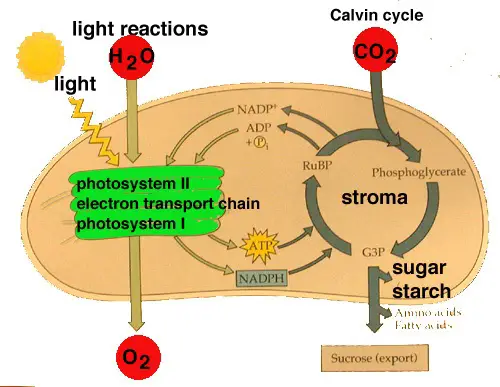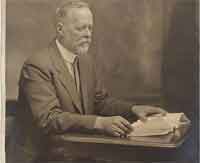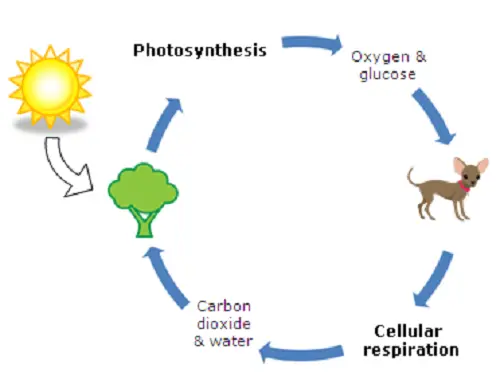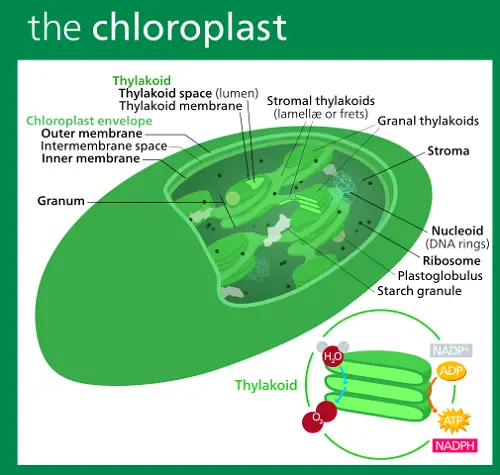
Photosynthesis is a complex process by which plants make organic food material. During the process, water is oxidized while carbon dioxide is reduced to produce carbohydrates. Photosynthesis takes place in the leaves of the plants to produce food that in turn is used to enhance plant growth.
Photosynthesis is comprised of two steps namely: light reaction and dark reaction. The light reaction stage involves the breaking down of water in the chlorophyll molecules in the presence of light to form components such as NADPH2 and ATP. On the other hand, the dark reaction as the name implies does not require any light in order for the process to take place. This is the second step of the process of photosynthesis in the plants.
Light requirements in the process of photosynthesis
Quite a number of chemical processes in plants require light in order to speed up the process. For instance, the light reactions require light in order to produce energy molecules that are also known as ATP and NADPH2.
Chlorophyll is the green coloring of the leaves and plays a significant role in absorbing light which in turn is used to produce these energy molecules. These energy molecules that are produced during the light reaction process are required for the second stage of photosynthesis.
In contrast to light reaction, the dark reaction is independent of light. As the name implies, the dark reaction in the process of photosynthesis often takes place during dark times in the absence of light.
During this process, the plants use ATP and NADPH2 molecules produced in the light reaction to produce carbohydrates. This is also known as Calvin Benison Cycle. This is when carbon dioxide is fixed to produce carbohydrates, a process also known as carbon dioxide fixation. However, dark reactions may not be sustained in the long run if the plant has been deprived of light for a long period.
Period of occurrence: light and dark reactions
In terms of period of occurrence, light reactions only take place during the day when there is light from the sun. This light is then absorbed to facilitate the formation of energy molecules ATP and NADPH2.
The dark reaction takes place during night time in the absence of light. However, it should be noted that this process can only take place after the occurrence of light reaction which produces the components required in order for this process to take place. Light reaction process is longer compared to the dark reaction which mainly involves the reduction of carbon dioxide to produce carbohydrates.
However, it should be noted that plant growth cannot be promoted in conditions that are characterized by prolonged darkness since this hinders the production of energy giving molecules mentioned above.
Place of occurrence
The light reaction takes place in the grana of the chloroplast. This is found in the leaves of the plants and grana is comprised of chemical components that are capable of absorbing light. These components are known as chlorophyll. On the other hand, the dark reaction takes place in the stroma of the chloroplast and this chemical reaction is slower than the light reaction. The main reason for this slow reaction is that no new molecules are produced since the process mainly involves the transformation of the already formed molecules into carbohydrates.
What happens in the dark reaction?
In the dark reaction, carbon dioxide is synthesized to form sugars which are rich in carbohydrates. The compound ATP that is rich in energy is used as well as NADPH2 with assimilatory powers.
During the dark reaction, energy rich compounds are used to produce carbohydrates in the plants. These carbohydrates constitute food molecules that are in turn used by the plants to facilitate their growth.
Therefore, it can be seen that the dark reaction is a follow up of the light reaction in the process of photosynthesis. In other words, dark reaction is dependent on the light reaction.
Products of light and dark reaction
The light reaction in photosynthesis mainly involves water plus light and the chemical process takes place in the grana of the plant. Oxygen is produced as a result of the chemical process. The oxygen produced is used as source of air for breathing by both human beings and animals. This process is not only beneficial to plant growth alone but to other components of life as indicated. The dark reaction on the other hand does not involve any photolysis but absorption of carbon dioxide to form carbohydrates.
Light and Dark Reaction
| Light | Dark |
| Occurs in the grana of the chloroplasts | Occurs in the stroma of the chloroplasts |
| Process depends on light and involves two photo systems namely: PS I & PS II | Process does not require light |
| Photolysis of water takes place and oxygen is released | No water photolysis and carbon dioxide is absorbed |
| ATP & NADPH are produced and these drive dark reaction | Glucose is produced |
| Oxygen is produced | Carbon dioxide is reduced to produce carbohydrates |
Summary of the main differences between light and dark reactions of photosynthesis
Photosynthesis is a chemical process that takes place in the leaves of the plants and it is comprised of two stages namely: light and dark reactions. The light reaction as the name suggests depend on light from the sun. The light energy facilitates the production of two molecules that are very important in the next stage of photosynthesis. These are ATP which is responsible for energy storage and NADPH responsible for reduced electron carrier.
The dark reactions make use of these molecules and the process is also known as the Calvin Benison Cycle. Below is the summary of the main factors that differentiate light reaction from dark reaction.
- Light energy is required in the light reaction. The light energy is specifically meant to facilitate the production of ATP, a molecule that stores energy and NADPH, a reduced electron career. These two molecules are required in the second stage of photosynthesis called dark reaction. This is when carbohydrates are produced through the reduction of carbon dioxide.
- NADPH helps to provide electrons that are required to fix the carbon dioxide so that it can form the carbohydrates that are required for growth of the plants.
- The other aspect is that the light reaction takes place in the grana of the plant particularly in the chloroplasts. The dark reaction on the other hand takes place in the stroma of the plant’s chloroplast.
- Light reaction takes place during the day where processes such as photosystems 1 and 2 are required to facilitate the reactions. Photosystems are not required in the dark reaction since it takes place in the absence of light.
- Photolysis of water takes place during light reaction and this results in the production of oxygen. Oxygen is used by both human beings and animals as breathing air. Photolysis does not take place during dark reaction. However, carbon dioxide is reduced during the process so that it can form carbohydrates.
Conclusion
Over and above, it can be observed that the process of photosynthesis is comprised of two steps namely light and dark reaction.
As the names suggest, the light reaction requires light energy while the dark reaction does not require any light in order for it to take place. The light reaction process produces molecules that are required in the dark reaction stage. This is known as the Calvin Benison Cycle.
The other difference between light and dark reactions is that the former produces oxygen and the later produces carbohydrates respectively as the products. The carbohydrates are use for plant growth while oxygen is used as breathing air by both animals and human beings.












Leave a Reply